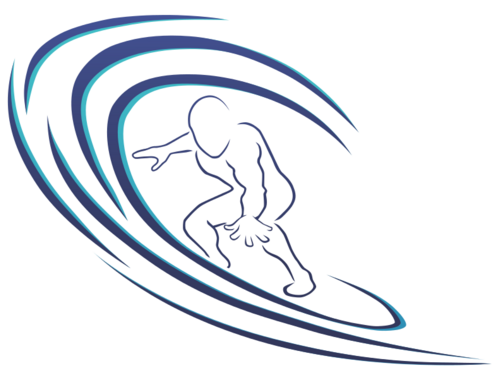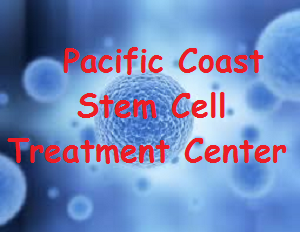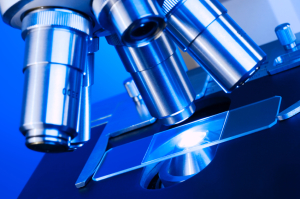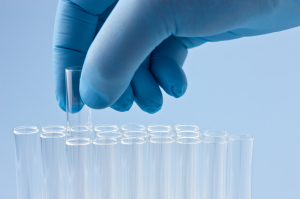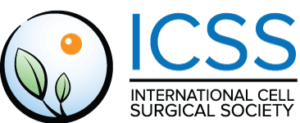Stem Cell Therapy
We use your own stem cells to induce repair and renewal of your damaged tissues.
What you can expect:
- Trigger stem cells to differentiate into the cells your body needs to heal
- Advanced technique to harvest and reinfuse your own adult stem cells
- Less likely to initiate immune rejection responses after transplantation compared to embryonic stem cells due to the use of the patient’s own cells
- Minimally invasive
Offered by
[heading_2 type=”divider”]View our Latest Clinical Study[/heading_2]
In November 2019, a few of our very own orthopedic physicians published a prospective study in the International Journal of Stem Cell Research & Therapy called, “Prospective Study of Autologous Adipose Derived Stromal Vascular Fraction Containing Stem Cells for the Treatment of Knee Osteoarthritis.”
Dr. Berman, Dr. Grogan, Dr. O’Brien, and their colleague’s found that this stem cell therapy protocol is a simple, safe, and effective form of treatment for those experiencing knee arthritis.
What is Stem Cell Therapy?
Stem cell therapy is an exciting new area in the field of regenerative medicine at Pacific Coast Stem Cell Treatment Center. Possible applications exist in many different medical fields. In musculoskeletal medicine, there have already been many good outcomes using stem cell therapy to help stimulate regeneration of bone, cartilage, tendons, and ligaments. Biological resurfacing in arthritic joints, repair of chronically torn tendons, and faster recovery of ligament injuries are just some of the new frontiers in orthopedics. 
What is a stem cell and how is it able to regenerate damaged tissue?
Stem cells have the remarkable potential to develop into many different cell types in the body. They can serve as an internal repair system dividing an unlimited number of times to replenish other cells. Stem cells are unspecialized cells capable of renewing themselves through cell division and can be induced to become tissue- or organ-specific cells with special functions. There are two kinds of stem cells: embryonic and adult. Embryonic stem cells are derived from human embryos and replicated in the laboratory. Adult stem cells are plentiful in bone marrow and fat. Hematopoietic stem cells form all types of blood cells in the body. A second population, called bone marrow stromal stem cells or mesenchymal stem cells, can generate bone, cartilage, fat, and fibrous connective tissue.
Stem cell therapy involves the ability to trigger each stem cell to differentiate into cells that facilitate healing.
Stem cells are capable of dividing and renewing themselves for long periods. They have an unlimited capacity for self-renewal. Stem cells are unspecialized, but can give rise to specialized cells through a process called differentiation. There are signals inside and outside the cells that trigger each stem cell to differentiate. Internal signals are controlled by a cell’s genes. External signals include chemicals secreted by other cells, physical contact with neighboring cells, and certain molecules in the microenvironment. With tissue injury or cell death, adult stem cells are activated by growth factors (cytokines) and are mobilized toward damaged tissue causing them to differentiate into specific cells to facilitate tissue healing, recovery, and regeneration. Controlling stem cell differentiation can lead to specific cell-based therapies. Adult stem cells are undifferentiated and can be found among differentiated cells in a tissue or organ. These adult stem cells can renew themselves and differentiate to yield some or all of the major specialized cell types of the tissue or organ.
We use stem cells from your own fat tissue or bone marrow as opposed to using embryonic stem cells.
At Pacific Coast Sports Medicine we use an advanced technique to harvest and reinfuse your own adult stem cells. It was originally thought that the best source of stem cells would be from human embryos. However, this has proved to not be the case and there is much ethical debate over the use of embryonic tissue. More recently, we have learned that stem cells from bone marrow and fat work the best. Original techniques in orthopedics involved the painful procedure of aspiration of cells from bone marrow, followed by a processing and culturing process in laboratory for a few days, and finally injected back into the body during a second procedure. Thankfully, it has been demonstrated that fat has higher concentrations of stem cells and is much safer and easier to harvest compared to bone marrow. The cells are easily harvested through liposuction under local anesthesia or intravenous sedation. The solution is then concentrated with a centrifuge, incubated for 40 minutes to digest unneeded fat, and stem cells are then injected into the recipient site. The entire procedure takes only about 2 hours in the office. Your stem cells can also be sent to a special storage facility that will preserve them in a deep freeze unit until needed in the future.
Stem cell research has been underway for more than 60 years and has demonstrated strong evidence in the repair of bone, cartilage, meniscus, tendon, ligament, muscle, fat, and more.
The primary role of adult stem cells is to maintain and repair the tissue in which they are found. Adult stem cells are also referred to as somatic stem cells. Research with adult stem cells began in the 1950s when researchers discovered that the bone marrow contains two types of stem cells. Adult stem cells are much less likely to initiate immune rejection responses after transplantation compared to embryonic stem cells because the patient’s own cells are harvested and re-injected back into the same individual. This is referred to as autologous transplantation (receiving one’s own tissue back).
 There are currently hundreds of clinical trials underway to research the application of stem cell therapy in humans. Some of the conditions include brain damage (Parkinson’s and Alzheimer’s), cancer, spinal cord injury, muscular dystrophy, heart damage/disease, blindness, diabetes, stroke, wound healing, infertility, and rheumatoid arthritis. There is strong clinical evidence of efficacy in many orthopedic conditions including repair of bone, cartilage, meniscus, tendon, ligament, muscle, fat, subchondral bone cysts, and osteoarthritis.
There are currently hundreds of clinical trials underway to research the application of stem cell therapy in humans. Some of the conditions include brain damage (Parkinson’s and Alzheimer’s), cancer, spinal cord injury, muscular dystrophy, heart damage/disease, blindness, diabetes, stroke, wound healing, infertility, and rheumatoid arthritis. There is strong clinical evidence of efficacy in many orthopedic conditions including repair of bone, cartilage, meniscus, tendon, ligament, muscle, fat, subchondral bone cysts, and osteoarthritis.
If you think you may have an orthopedic condition that could benefit from stem cell therapy, we invite you to come in for a consultation.
You will be evaluated and all of your options presented. If you are an appropriate candidate, you will be scheduled for the stem cell therapy and may need medical clearance from your personal physician. The procedure is performed in the office under local anesthesia alone or combined with intravenous sedation. Fat can be harvested from any area of the body that has adequate supply. Stem cell therapy is done under complete sterility and the fat/stem cell solution is prepared in a closed system that is not exposed to the air. Follow up office visits monitor your response to the therapy.
Our protocol for stem cell therapy falls within all FDA guidelines for autologous transplantation.
 STEM CELL TREATMENT IS NOT APPROVED BY THE FDA FOR ANY SPECIFIC DISEASE. Pacific Coast Stem Cell Treatment Center does NOT claim that any applications, or potential applications, using these autologous stem cell treatments are approved by the FDA, or are even effective. We do not claim that these treatments work for any listed nor unlisted condition, intended or implied. It’s important for our patients to do their own research based on the options that we present so that one can make an informed decision. Any decision to participate in our patient funded experimental protocols is completely voluntary.
STEM CELL TREATMENT IS NOT APPROVED BY THE FDA FOR ANY SPECIFIC DISEASE. Pacific Coast Stem Cell Treatment Center does NOT claim that any applications, or potential applications, using these autologous stem cell treatments are approved by the FDA, or are even effective. We do not claim that these treatments work for any listed nor unlisted condition, intended or implied. It’s important for our patients to do their own research based on the options that we present so that one can make an informed decision. Any decision to participate in our patient funded experimental protocols is completely voluntary.
Please go to our web pages:
Regenerative Orthopedics
Before & After Stem Cell
To learn more about stem cell therapy, please visit the following websites:
Cell Surgical Network
California Stem Cell Treatment Center
